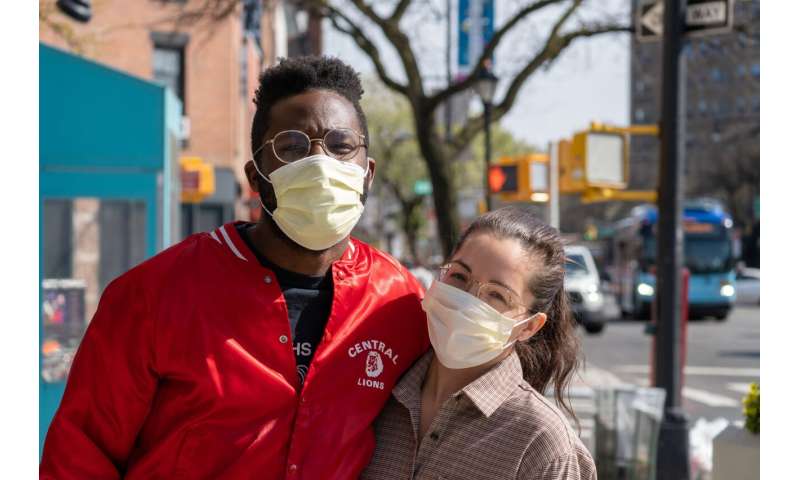Home » Health News »
COVID-19 immunity and reinfection: Why it’s still essential to take precautions

With some viruses, once you have been infected and have developed antibodies, you will be immune to that virus for life. Past infection with the SARS-CoV-2 virus, which causes COVID-19, does not, as far as is known at this stage, guarantee protection against future infections. It’s not absolutely clear whether this virus may become dormant and, upon reactivation, cause a recurrence of infection. Caroline Southey, editor of The Conversation Africa, asked Sehaam Khan and Saurabh Sinha to explain.
What are antibodies and what is their function?
When a virus infects a host, it invades the host cells and replicates (makes copies of itself). One way that our immune system protects us is to remove the virus from the body before it gets the chance to infect a cell. The immune system has cells called B lymphocytes which make proteins called antibodies. Antibodies recognize invading pathogens such as viruses and bind to them. Then the antibodies neutralize or destroy the virus so that it can’t infect the host cell.
B lymphocytes also form memory cells which “remember” the pathogen. This enables the host to produce antibodies faster if there’s an infection by that virus in future.
For some viruses—measles, for example—once a person has been infected, they are considered to have lifelong immunity. Other viruses mutate, so people can be affected more than once. The seasonal flu virus is an example.
What are the knowns and unknowns?
There are new things to learn about severe acute respiratory syndrome coronavirus 2 (SARS-CoV-2), the causative agent of the COVID-19 pandemic. It’s not known how long a person is protected by antibodies after infection by SARS-CoV-2. The level of protection is also unknown. Measures to diagnose, mitigate, treat and prevent infection continue to evolve. Policies are also evolving.
Globally, there have been a few accounts of patients who have tested positive, then negative, then positive again for COVID-19. While this is still currently a rare event, when a patient has symptoms and/or tests positive a second time, it could (in theory) be the same virus as the one that infected the person the first time. In other words, the virus entered the body, caused disease, became dormant in the person and later got reactivated to cause illness again. It might be that the body’s antibody protection had a limited life. Not much is known about the possibility of reinfection with the two other known coronaviruses, severe acute respiratory syndrome and Middle East respiratory syndrome. However, reinfections have been previously reported for the H1N1 virus.
One study addressed the possibility of reactivation of the SARS-CoV-2 virus involved only one patient. Its findings suggest that this was not a case of reactivation. Instead, it suggests the patient was infected separately by two genetic variants of the SARS-CoV-2 virus. It can be assumed that the antibodies produced against variant one (if viable antibodies were still within the body) did not provide protection against variant two.
The patient in this study, similar to a study in Ecuador, had more severe symptoms during the second infection. In another study in Netherlands, the second infection was fatal. The symptoms of most other patients during the second infection were comparable to the first round of infection. Some had no symptoms.
So, if you have ever tested positive, there is a chance you could contract the virus again. And you could possibly infect other people. You should still take the necessary precautions. Cover your nose and mouth with a face mask, avoid touching your face, avoid large gatherings, maintain physical distancing, sanitize, and keep doors and windows open if possible. If you have flu-like symptoms or are exposed to an infected person, isolate yourself and be vigilant.
Why does the question of reinfection matter in the pursuit of a vaccine?
A vaccine is a biological agent that imitates an infection. It stimulates a person’s immune system (to produce lymphocytes and antibodies), while almost never causing disease, and protecting the person from that disease. Sometimes, triggering the imitation of infection produces minor symptoms, such as fever. This can be expected as the body builds immunity. After a few weeks, the body has a supply of lymphocytes that will remember how to fight that disease in the future. When enough people have been immunized, the virus will not have enough eligible hosts, and should naturally die out. For example, infectious diseases such as measles, mumps and polio were once common but are now rare in most areas, because vaccines helped to establish herd immunity.
When a vaccine is developed, ideally it should make people immune to any variant of the virus. Many research groups have looked at the genetic diversity of the virus and whether mutations affect the working of the vaccine.
One study has found that mutations in the SARS-CoV-2 since the beginning of the pandemic are rare. This suggests that potential vaccine candidates will cover all circulating variants.
The authors stated: “We can therefore be cautiously optimistic that viral diversity should not be an obstacle for the development of a broadly protective SARS-CoV-2 vaccine, and that vaccines in current development should elicit responses that are reactive against currently circulating variants of SARS-CoV-2.”
However, if the study of the one patient who seemed to be infected twice by different genetic variants is accurate, it suggests that the antibodies produced against variant one did not provide sufficient protection against variant two. This does have implications for vaccine development. The vaccine might only work for one variant, or for a limited time.
Source: Read Full Article



